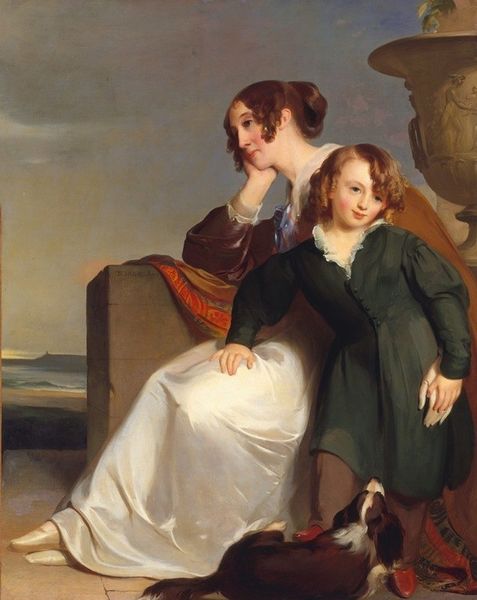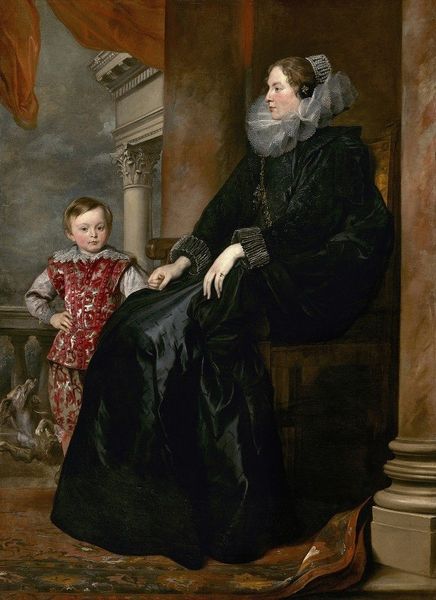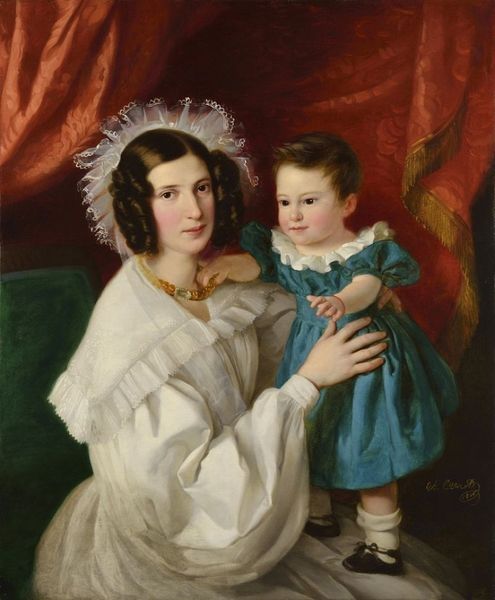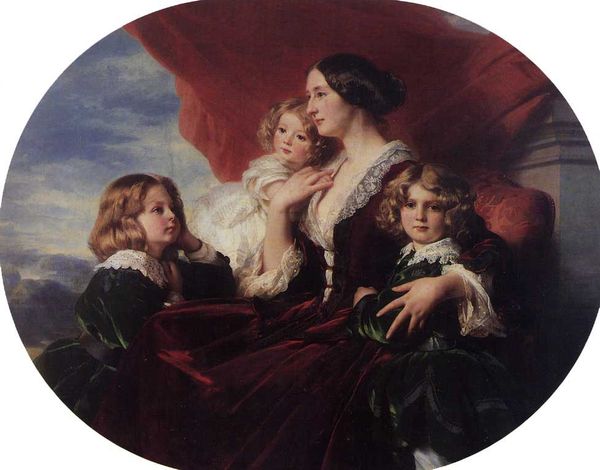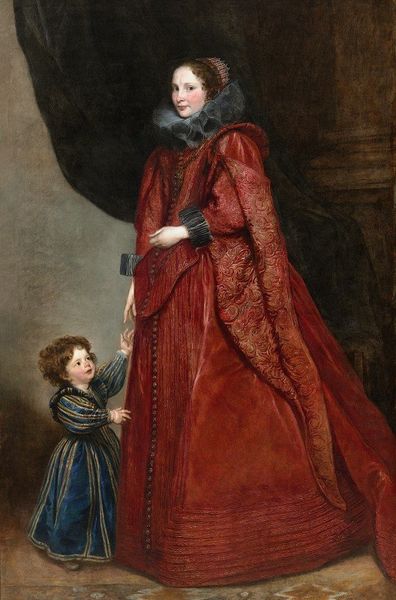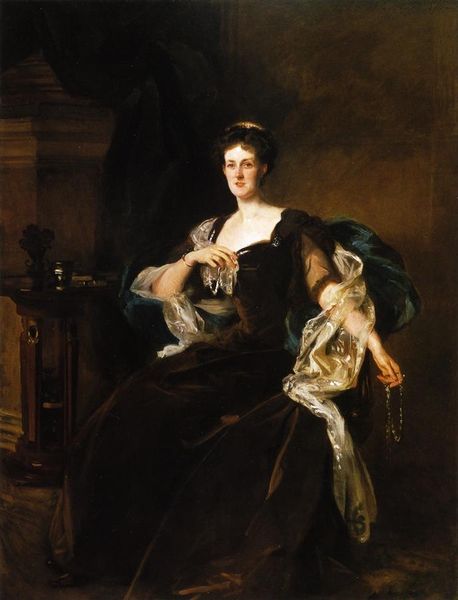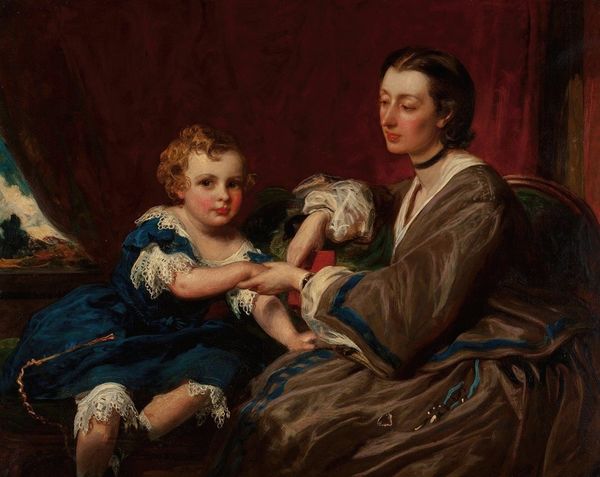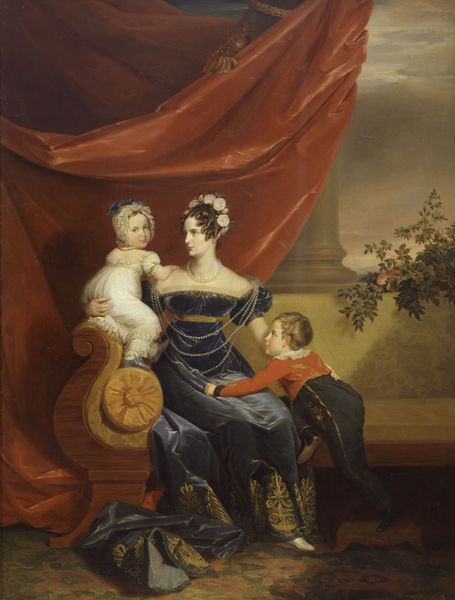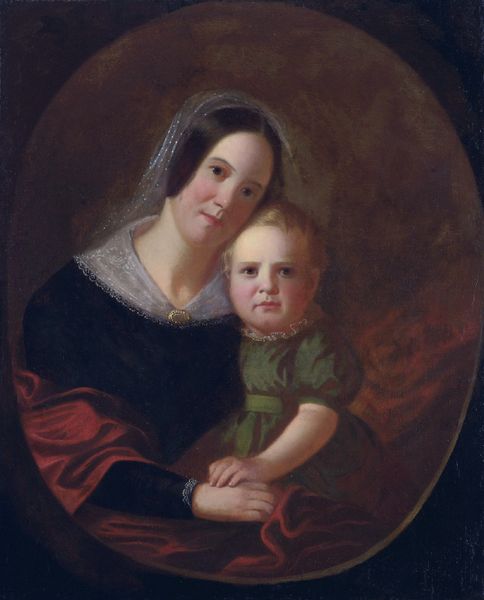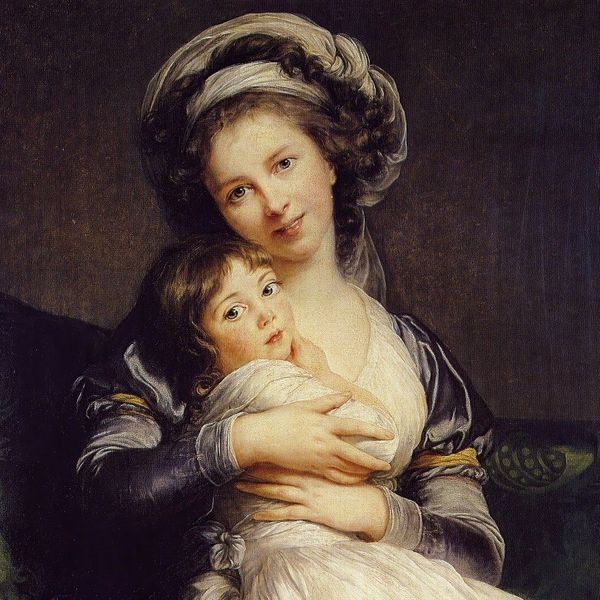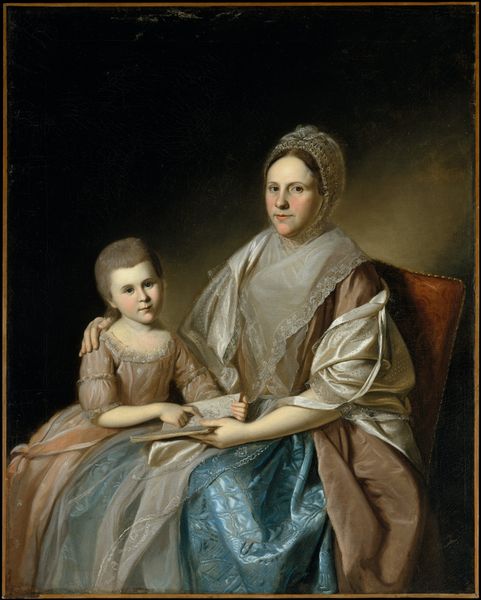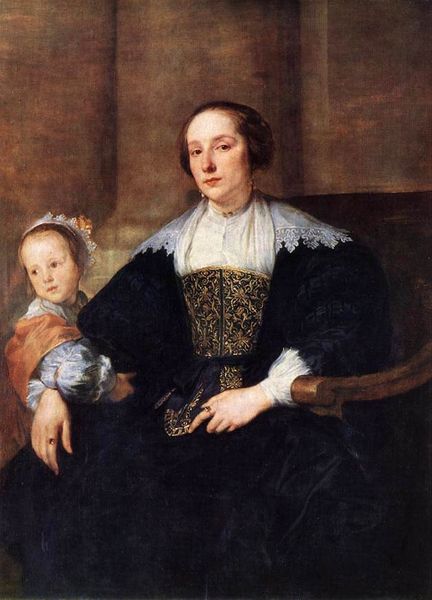
The Empress Eugenie Holding Louis Napoleon, the Prince Imperial, on her Knees 1857
0:00
0:00
Copyright: Public domain
Curator: This is Franz Xaver Winterhalter’s “The Empress Eugenie Holding Louis Napoleon, the Prince Imperial, on her Knees,” painted in 1857. Editor: The first thing that strikes me is the overwhelming use of red—the dress, the draping. It feels… opulent, but also slightly suffocating. Curator: That opulence is precisely what the painting communicates. Winterhalter was known as the portraitist of European royalty. This image is, in part, an articulation of power, a display of dynastic continuation during the Second Empire. Editor: Yes, but it's also so deliberately constructed. The pillar in the background, the theatrical drape... They don't feel accidental. There is a strong contrast between the hard lines of the architectural details and the soft contours of the figures and fabrics. Curator: The setting certainly elevates them to a kind of mythic status. The rigid composition creates an ideal of motherhood and imperial stability, particularly poignant as Eugenie was under immense pressure to produce a male heir. Editor: Looking closely, the baby's face appears almost too serene, too perfect, which reinforces the idea of them as figures in a carefully constructed image rather than as living individuals. The smoothness of the brushwork and the avoidance of any harsh lines contributes to this idealization. Curator: I find the almost porcelain-like depiction of their skin so revealing; It shows a preoccupation with appearance that defined their social role. The image catered to public fascination, reinforcing their position. This image circulated widely as an emblem of imperial continuity and familial devotion, crucial for maintaining the Empire’s image. Editor: It is a fascinating case study of how portraiture becomes an instrument of statecraft, transforming people into symbols and employing very intentional and effective uses of color, line, and setting to convey these abstract ideas to a vast audience. Curator: Agreed. This image is much more than just a portrait of a mother and child, it is a complex weaving of social and political narratives frozen in paint. Editor: Exactly. The painting functions as a symbol itself; It is a symbol carefully built up with layers of brushstrokes.
Comments
No comments
Be the first to comment and join the conversation on the ultimate creative platform.
